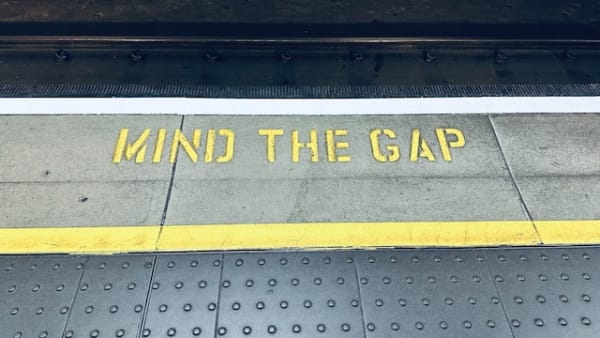
How To Conduct A Skills Gap Analysis To Build Better Teams
April 18, 2023

Building a high-performing workforce is crucial in today’s competitive business landscape, but it’s not an easy process. To do so, employers must effectively identify and address skills gaps within their organization.
In this article, we outline a strategic approach to conducting a skills gap analysis, providing you with the tools and insights needed to build better teams.
What is a skills gap analysis?
A skills gap analysis is a process of identifying the gap between the skills that are currently possessed by employees in an organization and the skills that are required for the organization to achieve its goals. This analysis can be conducted for an individual, a team, or an entire business.
The purpose of a skills gap analysis is to improve performance and productivity. It helps an organization identify the skills that are critical for success in its industry or market and compare these with the abilities of its current workforce.
The outcome is a roadmap that outlines the steps needed to close the skills gap through training, hiring, or other talent management strategies.
Why is a skills gap analysis important?
A skills gap analysis enables organizations to identify areas where there are deficiencies in skills and competencies. By recognizing these gaps, it becomes possible to focus on specific areas that need improvement.
As such, a skills gap analysis serves as a valuable tool for strategic planning and decision-making, allowing for targeted efforts to close the gaps and ensure that the necessary skills are developed or acquired.
It helps organizations align their talent development strategies with their goals and objectives, and ensures they have the right skills in place to be successful.
Benefits of conducting a skills gap analysis
Organizations that proactively address skills gaps in their workforce gain a competitive edge. No matter the size of the business or the industry it operates in, the benefits are universal.
Improved performance and productivity
By identifying the skills that employees need to perform their jobs effectively, organizations can provide targeted training and development programs that help improve performance and productivity - both on an individual and company-wide level.
This can lead to increased efficiency, higher quality output, and improved customer satisfaction.
Enhanced employee engagement and satisfaction
Employees who are given opportunities to develop their skills and advance in their careers are more likely to be engaged and satisfied with their jobs.
A skills gap analysis can identify areas where employees may feel they lack the necessary skills or knowledge to succeed, and targeted training programs can help address these issues.
Improved decision-making and problem-solving
A skills gap analysis should focus on both technical and soft skills, but it should also consider abilities that are often overlooked - like logical reasoning and situational judgment.
These skills are essential for critical thinking and analysis, and employees who have them are better equipped to make informed decisions and solve complex problems.
Increased innovation and creativity
When employees are not encouraged to grow they become disengaged from their work, and contribute little as a result.
By providing them with opportunities to develop new skills and knowledge, organizations can foster a culture of innovation and creativity, where employees are keen to bring new ideas to the table.
Improved retention and recruitment
Employees who feel that their employer is investing in their development and career growth are more likely to remain with the organization, helping to improve retention.
Additionally, by investing in employee development organizations can enhance their employer value proposition and attract more top talent as a result.
Steps to conducting a skills gap analysis
A skills gap analysis has many benefits, but it’s also a complex process that requires careful planning and execution.
Below we outline the key steps involved in conducting a skills gap analysis, providing practical insights and actionable recommendations to close the gap and boost overall organizational performance.
Step 1: Define business goals and objectives
The first step in conducting a skills gap analysis is to clearly define business goals and objectives. This involves documenting the overall strategic direction of the organization so you can better determine the key skills and competencies required to achieve those goals.
It's important to have a clear understanding of what the organization aims to achieve in both the short and long-term, as this will serve as the foundation for identifying skills gaps and developing an effective strategy to fill them.
Step 2: Identify current skills
Once the business goals and objectives are defined, the next step is to identify the current skills of the workforce. This involves conducting a comprehensive assessment of the skills and competencies possessed by employees.
This assessment can be done through various methods, including:
Conducting surveys to gather self-assessment data from employees about their skills and competencies.
Conducting one-on-one interviews with employees for insight on their perceived strengths and areas for improvement.
Reviewing performance evaluations and feedback provided by managers and supervisors.
Using standardized skills assessment tools or tests to objectively measure the skills of employees in specific areas.
Observing employees in their work environment to help assess their skills and competencies in action.
Collecting 360 feedback from colleagues and peers who work closely with employees.
Reviewing existing training records and certifications to assess the skills that employees have received training in.
Whatever methods you use, the goal is to get a clear picture of the current skill levels of the workforce.
Step 3: Identify required skills
After identifying the current skills, the next step is to determine the skills required to achieve the business goals and objectives defined in step one. Again, there are multiple methods you can apply here, including:
Consulting with key stakeholders - such as managers, team leaders and subject matter experts - to determine the skills and competencies necessary for achieving business goals.
Conducting research on industry trends, best practices, and job market demands to identify skills that are highly valued and sought after in your specific field or industry.
Identifying any regulatory or compliance requirements that may dictate specific skills or certifications needed for certain roles within the organization.
Analyzing the skills and competencies possessed by high-performing employees in similar roles to identify the skills that contribute to their success.
Considering advancements in technology or industry changes that may impact the skills and competencies needed in the future.
Step 4: Analyze the data
With a comprehensive assessment of skills complete, you can now begin to analyze the data.
Identify trends and patterns: look for common themes, trends, and patterns in the data. For example, you may notice that multiple employees lack a specific skill or that certain departments show consistent gaps in certain competencies.
Compare current skills with required skills: compare the existing skills of your employees with the skills identified as required for achieving business goals and objectives. Identify the gaps between the two to determine areas that need improvement.
Prioritize skills gaps: look at skills gaps based on the impact they may have on the organization's performance and strategic goals. Identify the critical skills that are most crucial to address and prioritize them accordingly.
Some gaps may require immediate action, while others may be less critical and can be addressed in the long term.
Step 5: Develop a training and development plan
Based on this data analysis, the next step is to design a comprehensive training and development plan. This should outline the specific training programs, resources, and timelines needed to address the identified skills gaps.
It should also take into consideration the learning preferences of employees, the availability of training resources, and the budget allocated for training and development. The plan should be flexible and adaptable, allowing for ongoing evaluation and adjustment as needed.
Tips for implementing a skills gap analysis
1. Involve key stakeholders
It‘s essential to involve key stakeholders - including managers, employees, and HR - in the skills gap analysis process. This will ensure that the analysis is comprehensive and that the results are relevant to the organization's goals.
2. Develop clear and effective communication strategies
Clear and effective communication keeps everyone on the same page and creates a shared understanding of the objectives of the skills gap analysis. Clearly communicate the purpose of the task, the process, and the expected outcomes to everyone involved.
3. Allocate appropriate resources
Conducting a skills gap analysis requires time, effort, and resources. It’s important to select the right tools, assemble a skilled team, and allocate both your time and budget appropriately. You might also wish to consider bringing in external expertise.
4. Ensure data quality and integrity
For a skills gap analysis to be effective, you need to make sure that the data collected is accurate, reliable and relevant. This can be achieved by using validated tools and techniques and ensuring that all data is analyzed and interpreted appropriately.
5. Foster a learning and development culture
Organizational culture can play a key role in closing the skills gap. Foster a culture of continuous learning and improvement by providing employees with opportunities to acquire new skills and knowledge and by encouraging them to share their expertise with others.
6. Monitor and evaluate progress
Finally, it‘s important to measure the impact of the analysis on employee performance, engagement, and satisfaction, as well as its impact on organizational performance overall. Use this information to refine the process of any future skills gap analysis and to improve the talent management programs that are developed as a result.
Final thoughts
Conducting a skills gap analysis is a critical process for building better teams and improving organizational performance. By identifying current skills, determining required skills and analyzing deficiencies, businesses can create a roadmap to close the gaps through targeted training, hiring, or other talent management strategies.
By following the steps outlined in this article, organizations can strategically align their talent development efforts with their business goals and objectives, leading to a more skilled and competitive workforce.
Boost your hiring power.
Start using Neuroworx today.
Talk is cheap. We offer a 14-day free trial so you can see our platform for yourselves.
Try for free




